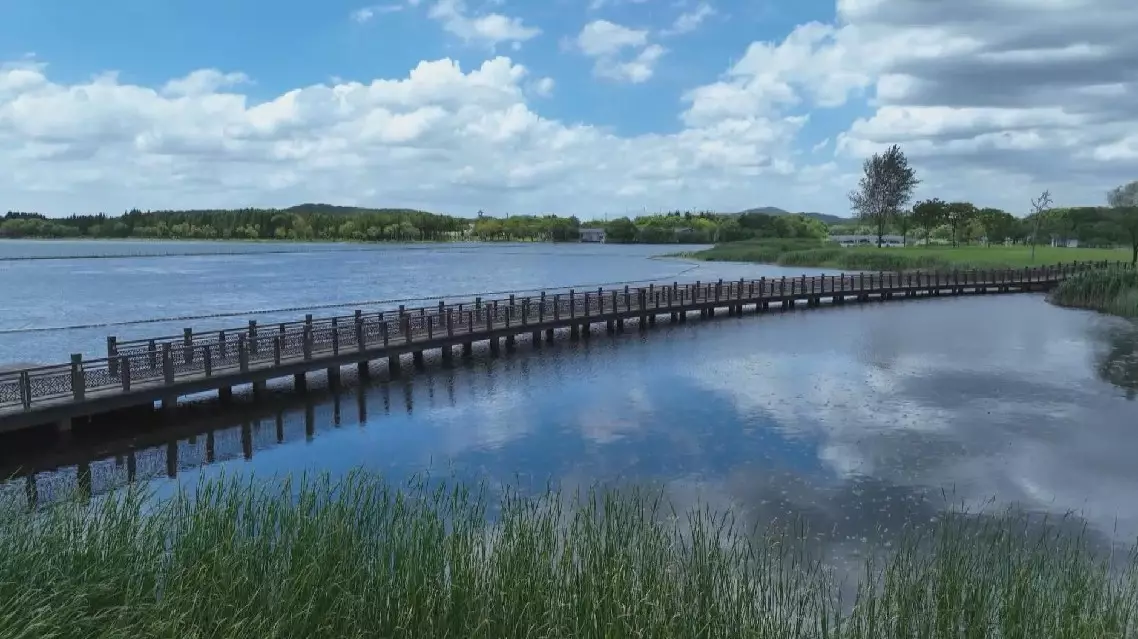Scientists at a state key laboratory have been employing various smart technologies to support the ecological restoration and water quality improvement efforts at Taihu Lake, China's third-largest freshwater lake.
Located in the lower reaches of the Yangtze River, Taihu Lake is an important water source for 17 million residents in one of China's densely populated and economically developed areas.
The laboratory has developed an early warning system capable of predicting the likelihood of an algae outbreak several days in advance, utilizing a combination of satellite remote sensing, buoy-based monitoring and on-site patrols.
Taihu Lake suffered a severe algae outbreak in 2007, prompting the provincial government to launch a pollution treatment program. Although not poisonous, the algae bloom decimates fish and pollutes the water.
At the Taihu Lake Ecosystem Research Station operated by the state key Laboratory of Lake Science and Environment, researchers said that the early warning system was independently developed by them in May 2019. It has successfully predicted over 20 algae outbreaks since then, significantly enhancing the effectiveness of prevention and control measures in the region.
"Have you noticed this small round object? It is pointing vertically downward. It is our high spectrum receiving system. After the sunlight reflects off the water surface, the object can receive the spectrum through the optically active substances in the water body. Then we can use this spectrum and algorithm to calculate and derive water quality parameters," said Li Na, one of the researchers.
Lihu Lake, an inland extension of the Taihu Lake system, has undergone habitat improvement, aquatic vegetation restoration and ecosystem reconstruction in its northwest corner since 2017.
Through the collaborative work of researchers from various institutions, an area of approximately 400,000 square meters of "underwater forest" has been reestablished in the lake.
The results of these dedicated efforts are now visible, as the once-degraded waters now boast a depth of around two meters with remarkable clarity, showcasing a thriving ecological landscape teeming with aquatic vegetation and abundant fish life.
This successful project serves as a valuable reference and model for guiding the protection and management of aquatic ecosystems in other key river basins across the country, providing important lessons and insights for future environmental restoration initiatives.
At an area called the smart lake simulation system, there are 72 white tanks, each simulating a small lake with different temperatures, humidity levels and wind disturbances. Researchers use these tanks to monitor and study the impact of future global climate change on lakes.
"This tank is not heated, and no nutrients are added, so the water stays clear and the plants grow well. In this tank, however, a lot of spirogyra grows. We put a biofilm on the substrate, where pollutants accumulate. We then scrub the pollutants off and take them back to the lab for analysis," said Deng Jianming, an associate researcher at the laboratory.

Smart technologies assist with water quality improvement at China's Taihu Lake

Smart technologies assist with water quality improvement at China's Taihu Lake









